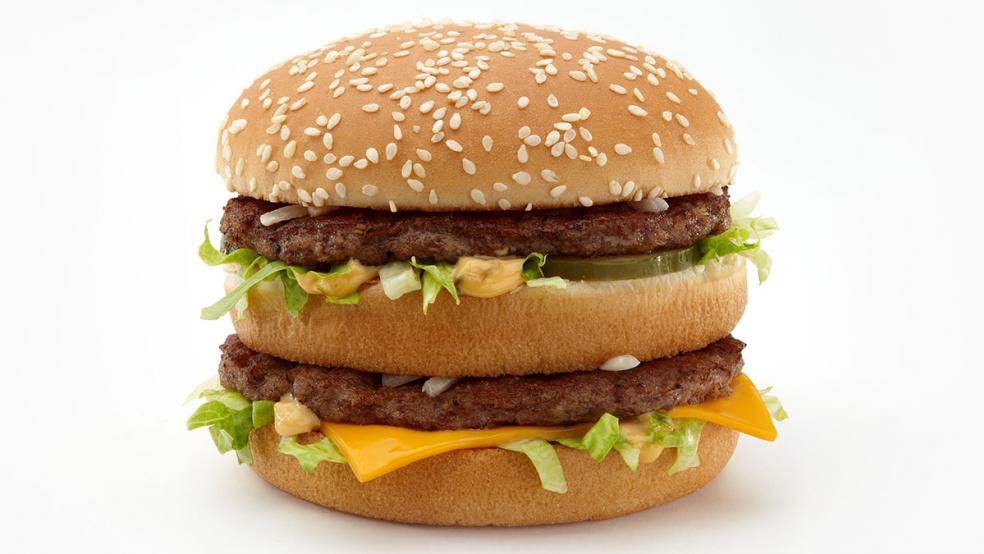McDonald’s announcement that it will briefly test a “Big Mac ATM” in Boston on Jan. 31 is a marketing gimmick, just like putting 10,000 bottles of Special Sauce on sale at selected Golden Arches yesterday.
For a few hours, the machine will spit out a Grand Mac or Mac Jr. for free – sort of: You have to plug in your Twitter handle and then a tweet will be generated saying: “Check out the new Big Mac,” according to The Boston Globe.
Related: Barbecue Bots: Further Evidence That Men Are Expendable
But beyond the ploy to drum up attention is a movement among both fast-food and casual-fast restaurants to cut down on the interaction between customers and servers, thereby reducing the number of employees it takes to deliver a meal.
 Wendy’s is installing self-ordering kiosks at company-owned outlets, which account for only a small percentage of its 6,000-plus restaurants, but the technology will be available to franchisees. McDonald’s is testing kiosks, too.
Wendy’s is installing self-ordering kiosks at company-owned outlets, which account for only a small percentage of its 6,000-plus restaurants, but the technology will be available to franchisees. McDonald’s is testing kiosks, too.
A Wendy’s executive said last year that the kiosks were a response to higher wages, pushed up by minimum-wage laws in some states and the difficulty of attracting “good labor.”
Andy Puzder, Donald Trump’s nominee for Labor Secretary, told Business Insider last year when he was CEO of Carl’s Jr. and Hardee’s, "With government driving up the cost of labor, it's driving down the number of jobs. You're going to see automation not just in airports and grocery stores, but in restaurants."
Puzder now famously said that robots are "always polite, they always upsell, they never take a vacation, they never show up late, there's never a slip-and-fall, or an age, sex, or race discrimination case.
Related: Fast-food Workers Protest Trump's Labor Secretary Nominee
But it’s not just fast-food restaurants that are looking to diminish the human factor.
In a modern version of the old Automats operated by Horn & Hardart in New York and Philadelphia starting in the early 20th century, Eatsa, a chain of restaurants with outlets in New York, San Francisco and Berkeley, Calif., offers quinoa-based meals presented without human interaction: You order and pay on an iPad and pick up your $6.95 bowl from a cubbie that flashes your name.

Ichiran, the Brooklyn outpost of a Japanese ramen chain, boils down the concept even further. It serves just one soup – the pork-based Tonkatsu – though there are many variations and possible add-ons. Solo diners sit in a booth separated from others by a bamboo screen, fill out a menu by hand and are served when a shade is raised, and a bowl is placed before them. There are even wordless ways to ask for more water or noodles.
For diners who have grown tired of servers who introduce themselves and practically give you their life stories before reciting the specials and adding details, the notion of getting your food without a lot of chatter is welcome.
Related: Will You Lose Your Job to a Robot?
But total automation may have a long way to go.
Momentum Machines, a startup in San Francisco that has been working on a system to cook and build burgers entirely without the help of humans since 2012, was set to open a restaurant last summer, according to Eater and other media outlets. Calls to Momentum went to a full voicemail box, and a satellite view of the planned location from last November shows no burger joint.





